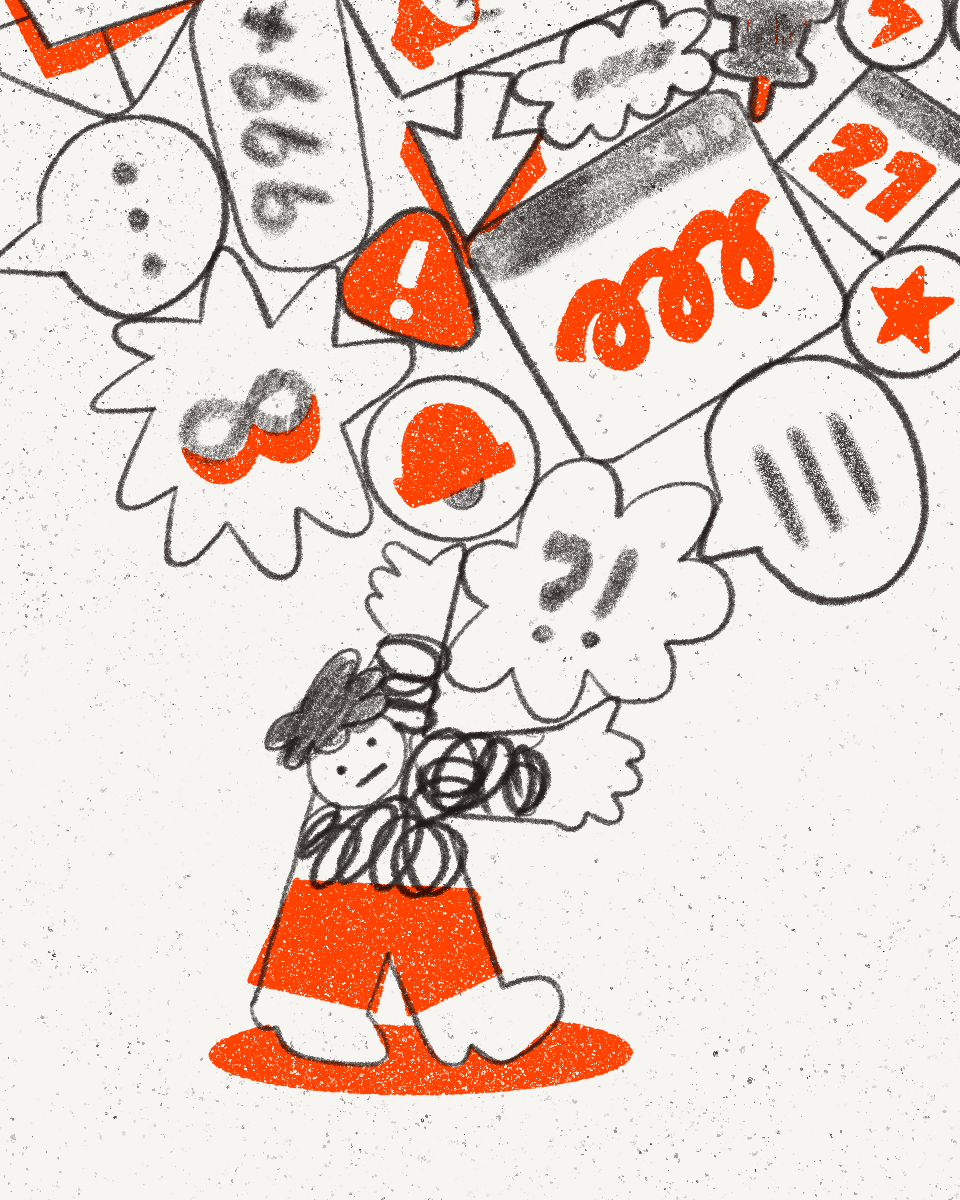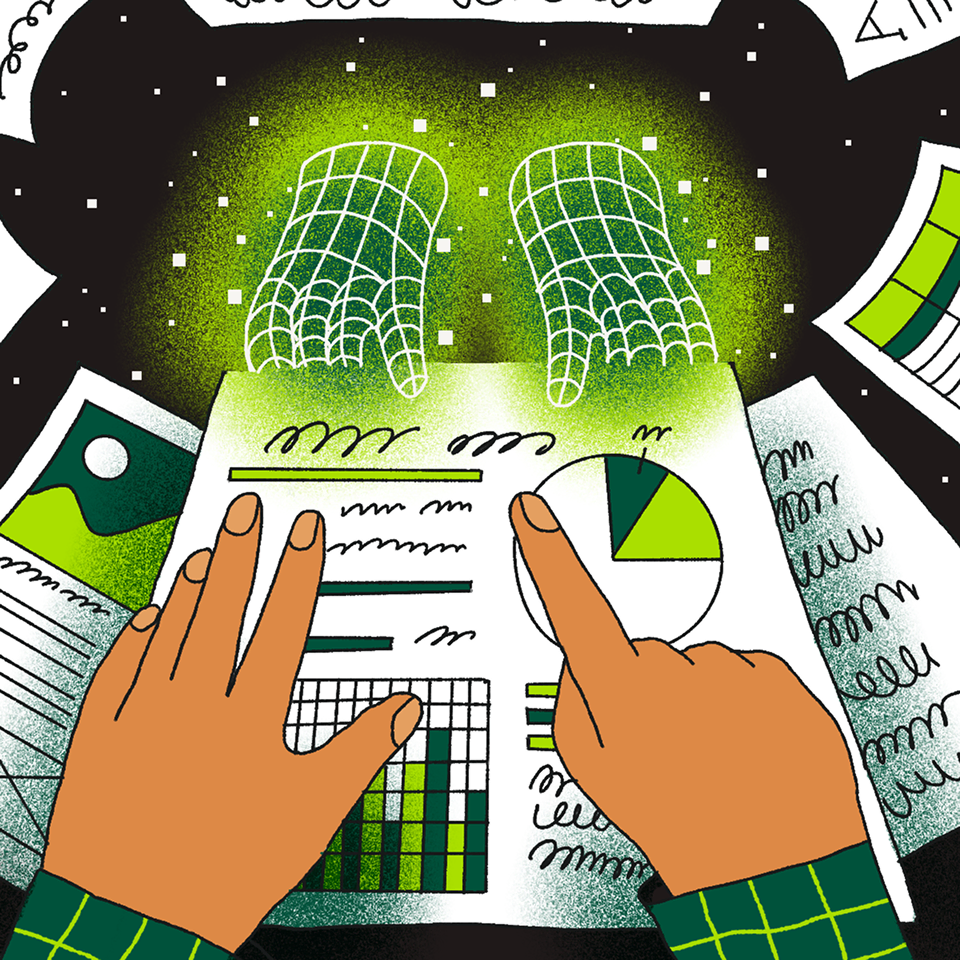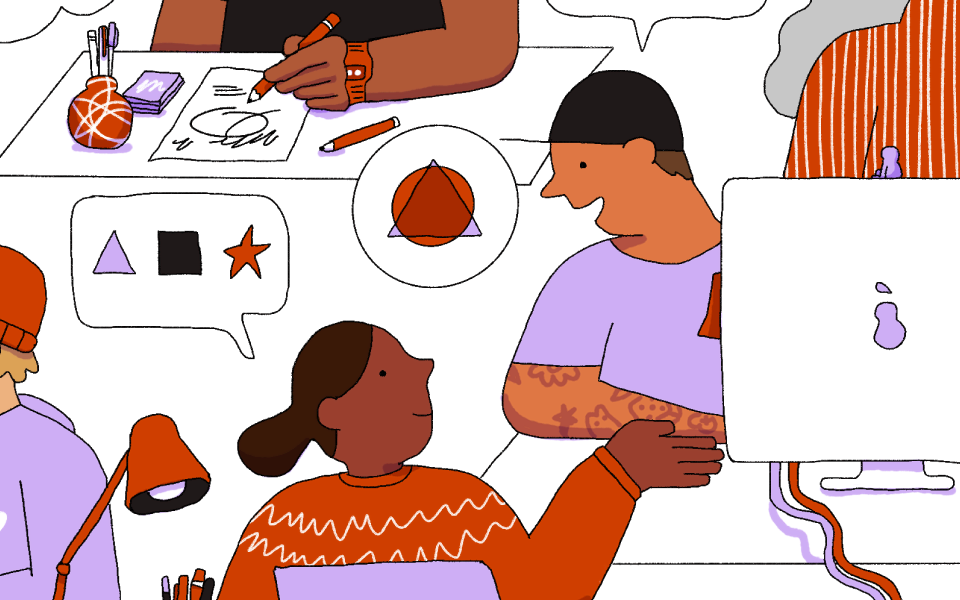
Behold, the 47-second workday (and how to get your attention span back)
Published on August 07, 2025
If you’re like most people who spend hours in front of a screen each day, you may have noticed your attention span isn’t what it used to be. It’s not just your imagination (unless your imagination is already three tabs away). Gloria Mark has the data to back it up. A professor of informatics at UC Irvine, Mark has spent over two decades tracking digital distraction. In 2004, the average knowledge worker stayed focused on a screen for about two and a half minutes before switching tasks. By 2012, that window had shrunk to 75 seconds. In her most recent lectures, she’s updated that figure once again—to just 47 seconds.
That metric captures more than just our relationship with our phones. It signals a deeper shift in how we work. Today’s knowledge economy fosters what Mark calls “attention fragmentation,” or a relentless toggling between tasks, tabs, and tools. And the impact has had a massively detrimental effect on our productivity, both in and out of the workplace.
“Smartphones arrived in 2007, and [after that] social media exploded,” Mark says. “All the while, so much of our shopping shifted from stores to screens. Nearly every part of life moved online, pulling our attention in more directions.”
A fair amount of Mark’s research, detailed in her 2023 book Attention Span—and continued in her Substack newsletter The Future of Attention—isn't exactly optimistic about our attention dilemma. But it’s not fatalistic either. Her current focus is on whether we can rebuild a more deliberate relationship with the tools we rely on to get stuff done. The good news? She believes it’s possible—if we first understand how distraction works, where it comes from, and how our tools shape it.
The architecture of distraction
Nowhere is the fragmentation of our attention more obvious than in the modern workday, particularly in virtual-first environments. That’s because the modern workday doesn’t unfold in a linear way—it splinters. Projects multiply across platforms. Conversations stretch across email, chat apps, and video calls. Even productive days can end with workers unsure about what they actually accomplished. (Mad Men-era workdays had plenty of problems, but chronic context-switching wasn’t one of ’em.)
Mark doesn’t call out any platforms as the singular source of this fragmentation, but she’s clear about one thing: Our tools shape our cognition. And the issue goes beyond information overload. Knowledge work, she argues, actively encourages mental reorientation—and that constant switching comes at a cognitive cost.
These tools work exactly as designed—until they don’t
Take the average chat tool, adopted by companies to streamline communication. “They were meant to simplify work and organize communication—and do, by sorting conversations into channels,” Mark says. “But every new project spawns a new channel, and suddenly you’re juggling dozens.”
Often, for all of those dozens of communication hubs, each channel has its own rhythm and unwritten rules of engagement. Switching between them—no matter how small the task—takes effort. “It demands constant attention, encourages rapid responses, and still requires cognitive effort to navigate: figuring out who’s included, what’s been said, and what you’ve missed,” Mark says.
In other words, these tools work exactly as designed—until they don’t. “It’s helpful in some settings, like fast-paced software teams,” Mark says. “But sometimes a tool like that adds as much noise as clarity.”
The call is coming from inside your brain
Of course, it’s not just our workplaces that are contributing to our cognitive overwhelm. It’s happening throughout our day, and across our many connected surfaces—and that’s by design.
You know that thing where you finally get five minutes of peace, and the first thing you do is check if your package has shipped? Or refresh the weather app for the third time today? Or open Threads, even though you swore you were going to stop opening Threads?
That’s not random distraction. That’s conditioning.
Mark’s research shows we interrupt ourselves as often as our devices do. When external interruptions are removed, self-interruptions spike. It’s like our brains have grown so used to being pinged, they start pinging themselves, says Mark.
As we’ve adapted to a world of constant app-switching, bouncing around has become our default. And as a result, silence itself has started to feel like something we need to escape, rather than a reprieve from digital noise.
The real promise of AI might lie in timing: A tool that knows when you’ve already lost focus could feel like support, not interruption. That’s why many folks are turning to new AI tools like Dropbox Dash—for focus, efficiency, or simply a bit of help keeping up.
It’s like our brains have grown so used to being pinged, they start pinging themselves, says Mark
Tools that think with you
As part of her research, Mark looks at how tech shapes our attention. Lately, that includes testing AI tools designed to ease cognitive load. But, importantly, she doesn’t view them as autopilot.
“I see [AI] more as a collaborator: useful, but only if I stay actively involved,” Mark says. In her own work, the moment she stops thinking critically about what AI is producing, her mind begins to drift.
This ties into broader research around interruption timing. For years, scientists have studied how to detect natural break points in a person’s workflow, or moments when a ping won’t completely derail their concentration. They’ve tested everything from tracking keystrokes and eye movements to pressure sensors in office chairs. Most of those systems and ideas never made it out of the lab.
“It’s a hard problem,” Mark says. And the technical challenges are weighty—but the principle holds: timing matters more than we realize.
Well-designed future systems could learn to wait for natural transitions in someone’s work, or signal when your attention has already started drifting. Instead of yanking you out of deep focus, technology could eventually work with your attention, not against it.
Conscious attention is a skill
Mark has a term for the skill of being able to catch yourself mid-drift, mid-scroll, or mid-sentence: meta-awareness. It’s the moment you realize your focus has wandered and consciously decide whether to follow that impulse or pull your attention back. And it’s just that: a skill.
Most people miss that window. In one study, Mark asked participants to estimate how often they switched tasks. They guessed around 15 times per hour. The real number? Over 30.
“Meta-awareness means being conscious of what you’re doing as it unfolds—catching yourself in the act, rather than running on autopilot,” she says. It doesn’t require constant vigilance, either, just strategic check-ins.
“Meta-awareness means being conscious of what you’re doing as it unfolds—catching yourself in the act, rather than running on autopilot,” says Mark
“You train it by asking: Do I really need to check the news right now?” Mark says. Another example? Finding yourself re-reading the same sentence from the same page of that book you’ve been staring at for a little too long.
By interrupting these impulses, we can transform an automatic response into a conscious choice. And conscious choices, repeated over time, can become intentional habits. “That moment of probing turns a reflex into a decision,” Mark says.
Mark herself has a system for engaging meta-awareness when this happens: “I pause, reset, and put down the book. It’s a way to protect your cognitive resources before they’re drained.” Eventually, catching yourself in these moments becomes automatic.
Cognitive drift will always return, but Mark says we can strengthen the muscle to be able to recognize when it’s happening. Seeing it is the first step toward changing it. In an attention economy built on fragmentation, awareness itself becomes our most valuable resource.
 Dropbox Dash: The AI teammate that understands your work
Dropbox Dash: The AI teammate that understands your work


.png/_jcr_content/renditions/hero_wide%20(1).webp)
.png/_jcr_content/renditions/hero_square%20(1).webp)